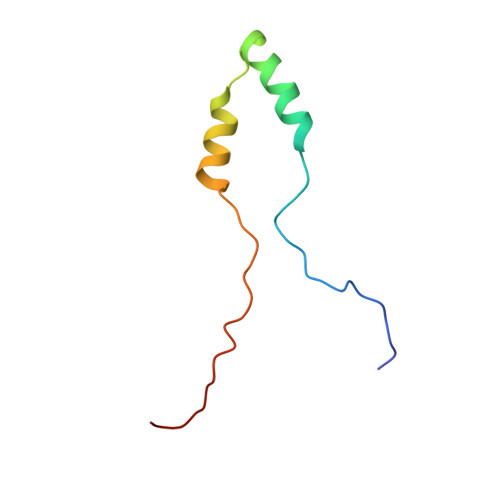The Solution Structures and Interaction of SinR and SinI: Elucidating the Mechanism of Action of the Master Regulator Switch for Biofilm Formation in Bacillus subtilis.
Milton, M.E., Draughn, G.L., Bobay, B.G., Stowe, S.D., Olson, A.L., Feldmann, E.A., Thompson, R.J., Myers, K.H., Santoro, M.T., Kearns, D.B., Cavanagh, J.(2019) J Mol Biol
- PubMed: 31493408
- DOI: https://doi.org/10.1016/j.jmb.2019.08.019
- Primary Citation of Related Structures:
5TMX, 5TN0, 5TN2 - PubMed Abstract:
Bacteria have developed numerous protection strategies to ensure survival in harsh environments, with perhaps the most robust method being the formation of a protective biofilm. In biofilms, bacterial cells are embedded within a matrix that is composed of a complex mixture of polysaccharides, proteins, and DNA. The gram-positive bacterium Bacillus subtilis has become a model organism for studying regulatory networks directing biofilm formation. The phenotypic transition from a planktonic to biofilm state is regulated by the activity of the transcriptional repressor, SinR, and its inactivation by its primary antagonist, SinI. In this work, we present the first full-length structural model of tetrameric SinR using a hybrid approach combining high-resolution solution nuclear magnetic resonance (NMR), chemical cross-linking, mass spectrometry, and molecular docking. We also present the solution NMR structure of the antagonist SinI dimer and probe the mechanism behind the SinR-SinI interaction using a combination of biochemical and biophysical techniques. As a result of these findings, we propose that SinI utilizes a residue replacement mechanism to block SinR multimerization, resulting in diminished DNA binding and concomitant decreased repressor activity. Finally, we provide an evidence-based mechanism that confirms how disruption of the SinR tetramer by SinI regulates gene expression.
Organizational Affiliation:
Department of Biochemistry and Molecular Biology, The Brody School of Medicine, East Carolina University, Greenville, NC 27834, USA.














